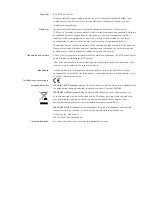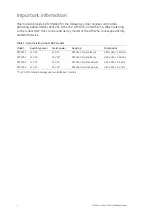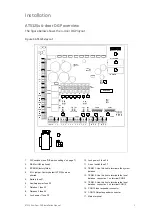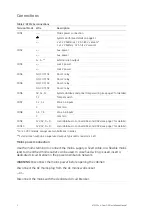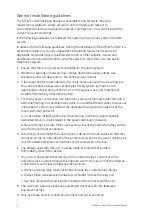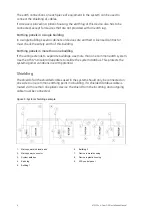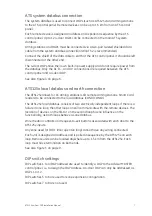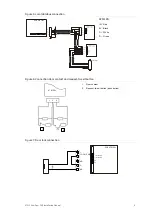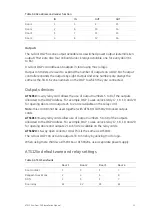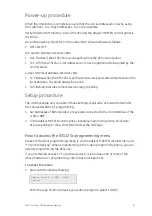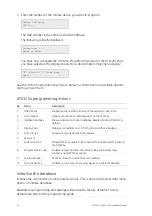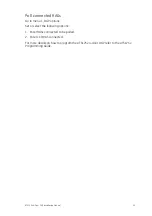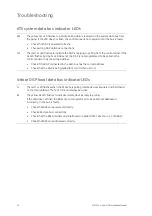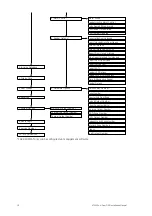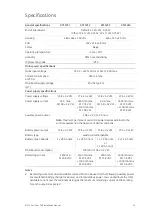
4
ATS125x 4-Door DGP Installation Manual
General installation guidelines
The ATS125x DGP has been designed, assembled, and tested to meet the
requirements related to safety, emission, and immunity with respect to
environmental electrical and electromagnetic interference, in accordance with the
current, relevant standards.
If the following guidelines are followed, the system will give many years of reliable
service.
In addition to the following guidelines, during the installation of the ATS125x DGP, it is
essential to follow any country-dependent installation requirements and local
applicable standards. Only a qualified electrician or other suitable trained and
qualified person should attempt to wire this system to the mains or to the public
telephone network.
1. Ensure that there is a good earth available for the alarm system.
2. Maintain a separation between low voltage and mains supply cables. Use
separate points of cable entry to the control panel cabinet.
3. If the upper and/or lower cabinet entry cable holes are used to route wiring into
the control panel, always use a proper pipe fitting system by means of an
appropriate conduit and junction box. For this purpose, use only materials of
suitable flammability class (HB or better).
4. For mains power connection, use the mains connector terminal either through a
permanent wiring or a flexible mains cable to an earthed mains outlet. Always use
cable ties to fix the mains cable at the dedicated fixing point provided near the
mains terminal connector.
a. In case when installing permanent fixed wiring, insert an easily accessible,
dedicated bipolar circuit breaker in the power distribution network.
b. Never attempt to solder mains connection wires at the ends where they will be
wired to the terminal connectors.
5. Avoid loops of wire inside the control panel cabinet and route cables so that they
do not lie on top or underneath of the printed circuit board. The use of cable ties is
recommended and improves neatness of the wiring within the box.
6. The battery used with this unit, must be made of materials of suitable
flammability class (HB or better).
7. Any circuit connected either directly to the onboard relay’s contact or to the
external relay’s contact through the onboard electronic output, must be rated as
a SELV (safety extra-low voltage) operating circuit.
a. Mains switching relay must not be fitted inside the control panel cabinet
b. Always place a suppression diode (e.g. a 1N4001) across the relay coil
c. Use only relays with good insulation between the contacts and the coil.
8. The minimum clearance between equipment closures is 50 mm (between
equipment vents).
9. Only use these units in a clean environment and not in humid air.


